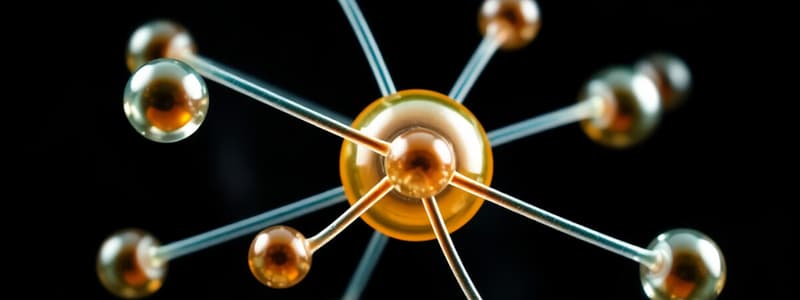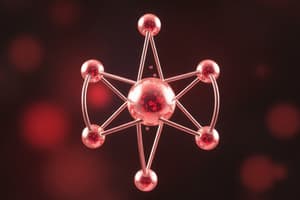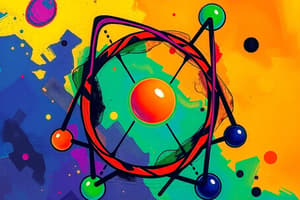Podcast
Questions and Answers
What is the primary role of electrons in a chemical bond?
What is the primary role of electrons in a chemical bond?
- They determine the chemical properties of metals.
- They act like glue holding atoms together.
- They provide the mass of the atom.
- They are responsible for the formation of new substances. (correct)
Why do electrons move so quickly in an atom?
Why do electrons move so quickly in an atom?
- They contain energy equivalent to larger particles. (correct)
- They are attracted to protons.
- They are influenced by gravity.
- They have very high mass.
Which of the following elements has more electrons than oxygen?
Which of the following elements has more electrons than oxygen?
- Hydrogen
- Copper (correct)
- Carbon
- Nitrogen
How does electricity flow through metals?
How does electricity flow through metals?
What happens when you rub a balloon against your head?
What happens when you rub a balloon against your head?
What is an example of an element that is a good conductor of electricity?
What is an example of an element that is a good conductor of electricity?
How do atoms bond together?
How do atoms bond together?
What analogy is used to describe the behavior of electrons in electrical conductors?
What analogy is used to describe the behavior of electrons in electrical conductors?
What number of electrons does an oxygen atom typically have?
What number of electrons does an oxygen atom typically have?
What type of particles move in orbits around the nucleus in an atom?
What type of particles move in orbits around the nucleus in an atom?
Flashcards
Electrons
Electrons
Tiny, negatively charged particles that orbit the nucleus of an atom. They are responsible for chemical bonding and electricity.
Atomic Bonding
Atomic Bonding
The process by which atoms share electrons to form a bond and create a new substance.
Electrical Conductors
Electrical Conductors
Materials that allow electricity to flow through them easily. They have loosely bound electrons that can move freely.
Electrical Current
Electrical Current
Signup and view all the flashcards
Electrostatic Force
Electrostatic Force
Signup and view all the flashcards
Atomic Nucleus
Atomic Nucleus
Signup and view all the flashcards
Electronegativity
Electronegativity
Signup and view all the flashcards
What are electrons?
What are electrons?
Signup and view all the flashcards
Electrons and Chemical Properties
Electrons and Chemical Properties
Signup and view all the flashcards
Electron Count and Elements
Electron Count and Elements
Signup and view all the flashcards
Study Notes
Electrons: Tiny Charged Particles
- Electrons are tiny particles within atoms, moving rapidly like planets around a sun.
- They possess a large amount of energy relative to their size.
- Electrons are found in all atoms, varying in number depending on the type of atom.
- An oxygen atom has 8 electrons; a copper atom contains 29.
- Atoms bond together by sharing electrons.
- This electron sharing creates entirely new substances.
- Metals like copper, aluminum, and iron are excellent electrical conductors due to easily transferable electrons.
- Electrical current, the flow of electrons between atoms, powers various devices.
- Electron transfer can be observed by rubbing a balloon on your head. The electrons in the hair and balloon are attracted to each other.
Studying That Suits You
Use AI to generate personalized quizzes and flashcards to suit your learning preferences.




